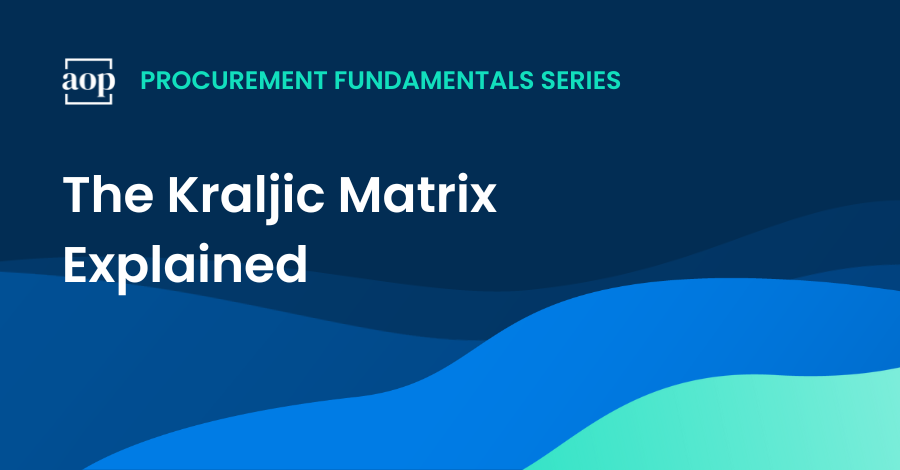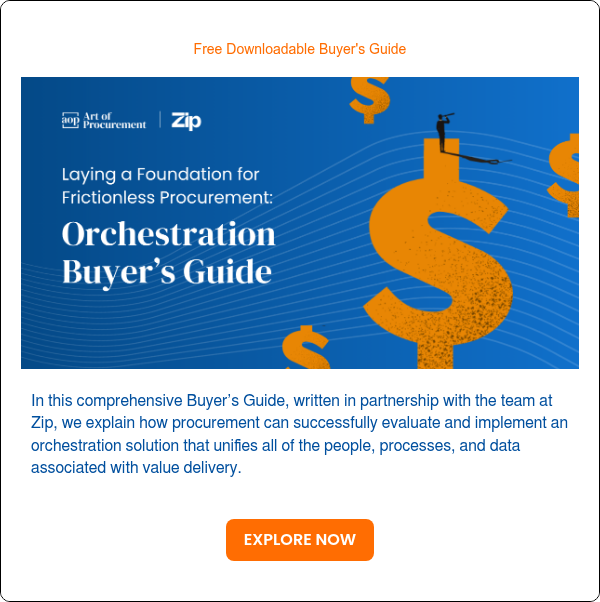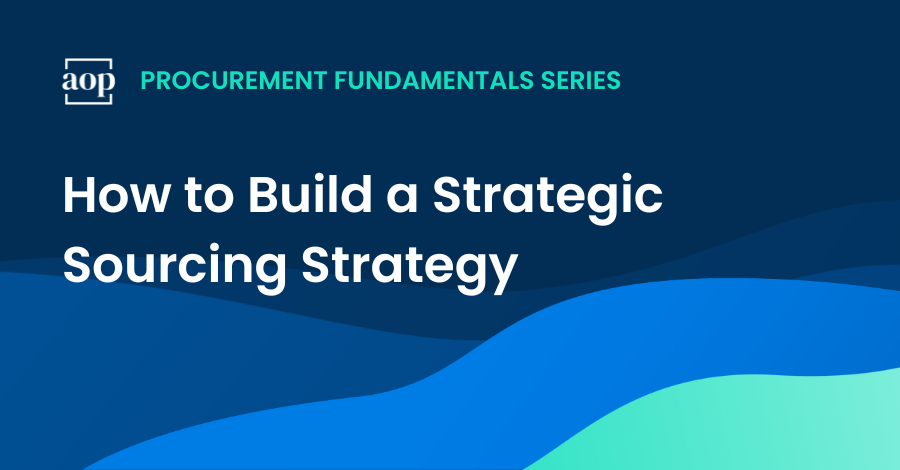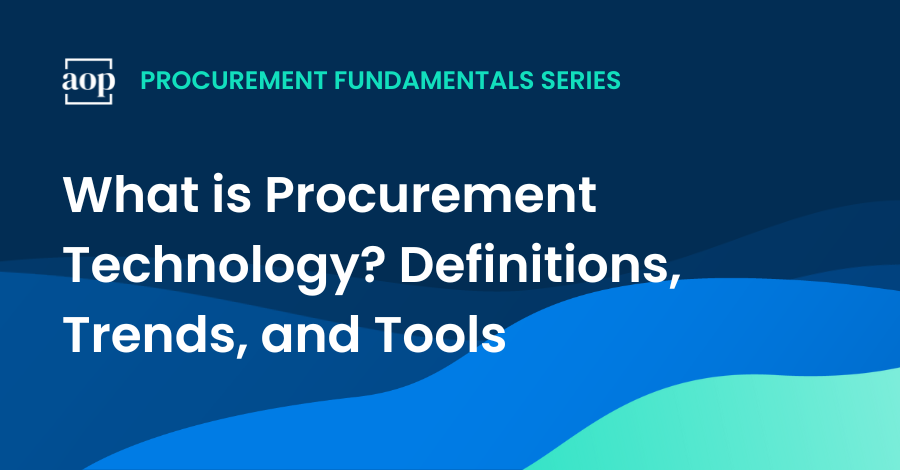
As the host of the Art of Procurement podcast I often hear procurement leaders make passing references to the Kraljic matrix and other similar models or frameworks. Many of these frameworks are decades old, but still influence our strategy today.
If you’re new to the profession, (or if it has been a while since you dusted off your supply chain management textbooks), I’m here to provide you with an easy to follow reference.
What is the Kraljic Matrix?
The Kraljic matrix provides a structured approach to segmenting the supply base and developing differentiated purchasing strategies based on two key dimensions: profit impact and supply risk.
By categorizing purchases into four distinct quadrants – non-critical, leverage, bottleneck, and strategic items – the matrix helps companies allocate resources, manage supplier relationships, and balance risk and reward in their strategic sourcing activities.
The Kraljic matrix provides procurement with a structured approach to segmenting the supply base and developing effective purchasing strategies.
The matrix uses two key dimensions: profit impact and supply risk. It puts purchases into four quadrants:
- Non-critical items
- Leverage items
- Bottleneck items
- Strategic items
This segmentation helps companies in several ways. It offers a framework for better allocating resources, managing supplier relationships, and balancing risk and reward in strategic sourcing.
Origins of the matrix
Peter Kraljic, a director at McKinsey & Company, introduced the Kraljic matrix in 1983. He wrote about it in a Harvard Business Review article titled "Purchasing Must Become Supply Management."
Kraljic made the case that purchasing managers need to change their approach, becoming more strategic and proactive with supplier management.
In his opinion, too many purchasing managers focused only on short-term cost savings and transactional efficiency. By better understanding the markets they were sourcing from, they could deliver improved results to the business.
Evolution and refinement
Since its introduction, the Kraljic matrix has become one of the most widely-recognized and influential frameworks in the field of procurement and supply chain management. It has been applied and adapted by numerous companies across different industries, and has spawned a rich body of academic research and practical commentary.
Over the years, various authors have proposed refinements and extensions to the original matrix, such as adding new dimensions (e.g. supplier capabilities, technology risk), incorporating dynamic market factors, and integrating with other strategic frameworks like total cost of ownership (TCO) and supplier relationship management (SRM). However, the core principles and insights of the Kraljic matrix have remained largely intact and continue to guide purchasing professionals in their strategic sourcing strategy.
The two dimensions: profit impact and supply risk
The Kraljic matrix uses two key dimensions to determine how important and complex a purchase category is.
- Profit impact: Profit impact measures a purchase’s financial significance. How much does the purchase contribute to your company's bottom line?
Several factors influence profit impact:
- Volume and value of the purchase
- Potential for cost savings or value creation
- Impact on product quality
- Impact on customer satisfaction
- Supply risk: Supply risk looks at complexity and uncertainty. How complex is the supply market for this purchase category?
Several factors influence supply risk:
- Scarcity or uniqueness of the item
- Level of supplier concentration or monopoly power
- Pace of technological change
- Geopolitical or regulatory risks
The four quadrants and category characteristics
The Kraljic matrix creates four quadrants, each for a different purchase category with its own characteristics and strategic needs.
- Non-critical items: These purchases have low profit impact and low supply risk. Examples include office supplies and standard components.
How do you manage them? These purchases need minimal strategic attention. You can use simple, transactional processes and focus on cost-efficient sourcing.
- Leverage items: These purchases have high profit impact but low supply risk. Examples include commodity raw materials or standard services.
What opportunities do they offer?
- Competitive bidding
- Volume consolidation
- Aggressive price negotiation
The goal is to maximize cost savings.
- Bottleneck items: These purchases have low profit impact but high supply risk. Examples include rare or specialized components.
These items require several approaches:
- Close monitoring
- Contingency planning
- Risk mitigation strategies
The goal is to ensure continuity of supply, avoiding production disruptions and/or delivery delays.
- Strategic items: These purchases have a high profit impact and high supply risk. Examples include critical raw materials, innovative technologies, or customized services.
What do they require?
- Close collaboration with suppliers
- Joint innovation and development
- Long-term partnerships
The goal is to manage risks and create mutual value.
Strategies for managing each category
For each of the four quadrants, Kraljic recommends a different strategic approach to supplier management and purchasing:
- Non-critical items: Streamline processes, minimize administrative costs, and ensure efficient order fulfillment.
- Leverage items: Exploit purchasing power, conduct competitive bidding, and optimize total costs.
- Bottleneck items: Ensure supply continuity, mitigate risks, and develop backup plans and alternative sources.
- Strategic items: Foster long-term partnerships, pursue joint innovation and value creation, and integrate suppliers into strategic planning.
By aligning purchasing strategies with the specific characteristics and requirements of each category, companies can optimize their resources, balance risks and rewards, and achieve a more strategic and differentiated approach to supplier management.
How is the Kraljic Matrix used in procurement?
The beauty of the Kraljic matrix lies in its simplicity. It is a helpful reference for procurement professionals in anything from building out category management frameworks or as a reference in the strategic sourcing process.
Assessing and segmenting the supply base
One of the primary applications of the Kraljic matrix is to assess and segment the company’s supply base into the four categories. This involves analyzing each item or service purchased in terms of its profit impact and supply risk, and plotting them on the matrix accordingly.
This segmentation exercise provides a clear and comprehensive overview of the company’s purchasing portfolio, and helps identify areas of opportunity or vulnerability that require strategic attention. It also enables purchasing managers to prioritize their efforts and resources based on the relative importance and complexity of each category.
Developing category strategies
Once the supply base is segmented, the Kraljic matrix provides a framework for developing differentiated category strategies. Rather than applying a one-size-fits-all approach, companies can tailor their sourcing, contracting, and supplier management practices to the specific characteristics and requirements of each quadrant.
For example, for non-critical items, the focus may be on streamlining processes, reducing transaction costs, and ensuring reliable supply through e-procurement and vendor-managed inventory. For strategic items, the emphasis may be on building long-term partnerships, sharing risks and rewards, and collaborating on innovation and continuous improvement.
Allocating resources and management attention
The Kraljic matrix also helps companies allocate their resources and management attention more effectively across the different purchase categories. By identifying the strategic importance and complexity of each category, category managers can prioritize their time and efforts on the areas that have the greatest impact on the company’s performance.
For example, strategic items typically require the most senior-level attention, cross-functional collaboration, and long-term planning, given their critical impact on profitability and risk exposure. In contrast, non-critical items can often be managed by more junior staff or even automated through e-procurement systems, freeing up resources for higher-value activities.
Reducing supply risk and improving profitability
By implementing the differentiated strategies recommended by the Kraljic matrix, companies can reduce supply risk and improve profitability. For example:
- By developing long-term partnerships and joint innovation with strategic suppliers, companies can secure access to critical resources, technologies, and capabilities while mitigating risks of supply disruptions or price volatility.
- By leveraging their purchasing power and conducting competitive bidding for leverage items, companies can drive down direct costs, improve quality, and optimize their total cost of ownership.
- By closely monitoring and mitigating risks for bottleneck items, companies can ensure continuity of supply, avoid production disruptions, and protect their reputation and customer relationships.
- By streamlining processes and reducing transaction costs for non-critical items, companies can minimize administrative overhead and free up resources for more strategic priorities.
Limitations of the Kraljic matrix
Despite its widespread adoption and proven benefits, the Kraljic matrix is not without its critics. Several academics and practitioners have pointed out potential drawbacks and challenges in applying the framework, which are important to consider when using it in practice.
Oversimplification of complex purchasing situations
One of the main criticisms of the Kraljic matrix is that it oversimplifies the complexity and nuances of real-world purchasing situations. By reducing the analysis to just two dimensions (profit impact and supply risk), the matrix may not capture other important factors that influence purchasing decisions, such as quality, innovation, sustainability, or social responsibility.
Also, the binary classification of each dimension (high vs. low) may not reflect the continuous and dynamic nature of profit impact and supply risk. In reality, these factors may vary along a spectrum and change over time, depending on market conditions, technological developments, or strategic priorities.
Static view that doesn’t account for market dynamics
Another limitation of the Kraljic matrix is that it provides a static snapshot of the purchasing portfolio at a given point in time. It does not account for the dynamic and evolving nature of supply markets, supplier relationships, or purchasing requirements.
For example, a strategic item may become less critical over time as new suppliers enter the market or as the company’s needs change. This also works the other way; a non-critical item may become more strategic if there are supply disruptions or if the company decides to innovate in that area.
It is important to regularly review and update the purchasing portfolio analysis and to consider market trends, competitive dynamics, and strategic priorities when making sourcing decisions.
Focus on current conditions vs future needs
The Kraljic matrix also tends to focus on optimizing the current purchasing situation based on existing supplier relationships and market conditions. It may not adequately consider the company’s future needs or strategic objectives, such as entering new markets, developing new products, or achieving long-term sustainability goals.
For example, a company may classify a particular raw material as a leverage item based on its current spending and supply base. However, if the company plans to expand into a new market where that raw material is scarce or strategic, it may need to reclassify it and develop new sourcing strategies accordingly.
Lack of guidance on how to implement strategies
Finally, while the Kraljic matrix provides a useful framework for segmenting the purchasing portfolio and developing differentiated strategies, it does not offer detailed guidance on how to actually implement those strategies.
For example, the matrix suggests that companies should develop long-term partnerships and collaborate on innovation with strategic suppliers. However, it does not provide specific tools or processes for how to select those suppliers, structure the partnerships, or measure the outcomes.
Similarly, the matrix recommends mitigating risks and ensuring supply continuity for bottleneck items, but it does not offer concrete steps or best practices for how to do so effectively.
As a result of these imitations, purchasing professionals need to complement the Kraljic matrix with other tools, frameworks, and processes to operationalize the strategies and achieve the desired results.
Adaptations of the Kraljic approach
To address some of the limitations and critiques of the original Kraljic matrix, various scholars and practitioners have proposed adaptations and extensions to the framework over the years. These modifications aim to enhance its relevance, flexibility, and practical applicability in different industries and contexts.
The Kraljic Portfolio Purchasing Model
One of the most notable adaptations of the Kraljic matrix is the Kraljic Portfolio Purchasing Model, proposed by Kraljic himself in a follow-up article in 1984. This model expands the original matrix by adding a third dimension: the company’s buying strength relative to its suppliers.
The resulting 3×3 matrix defines nine different purchasing strategies, based on the combination of profit impact, supply risk, and buying strength. For example, in situations of high profit impact, high supply risk, and low buying strength, the recommended strategy is to diversify the supply base and reduce dependence on single suppliers.
This extended model provides a more nuanced and dynamic view of the purchasing portfolio and offers additional strategic levers for managing supplier relationships and power dynamics. However, the 9×9 grid hasn’t gained as much popularity as the original matrix.
Integration with other frameworks
Another way to extend the value and applicability of the Kraljic matrix is to integrate it with other complementary frameworks and tools used in purchasing and supply chain management. Some examples include:
- Supplier Relationship Management (SRM): Integrating the Kraljic matrix with SRM processes and tools, such as supplier scorecards, supplier performance management, and joint improvement initiatives, to operationalize the strategic partnership approach for critical suppliers.
- Total Cost of Ownership (TCO): Combining the Kraljic matrix with TCO analysis to optimize the total lifecycle costs of purchases, rather than just the initial purchase price, and to make more informed trade-offs between cost, quality, and risk.
- Risk Management: Integrating the Kraljic matrix with supplier risk management frameworks and tools, such as supply chain mapping, scenario planning, and contingency planning, to proactively identify, assess, and mitigate supply risks across the purchasing portfolio.
By integrating the Kraljic matrix with these other frameworks, companies can develop a broader and more effective approach to strategic sourcing and supplier management, and achieve better alignment between their purchasing strategies and overall business objectives.
Bottom line on the Kraljic Matrix
Despite its age and limitations, the Kraljic matrix remains one of the most widely recognized and influential frameworks in the field of procurement and supply chain management. Its core principles and insights continue to shape the way companies approach strategic sourcing, supplier relationships, and risk management.
As the business landscape has become more global, digital, and sustainability-focused, the Kraljic matrix has lost some of its appeal. However, its fundamental premise – that purchasing must become strategic, differentiated, and value-driven – is relevant and compelling as ever.
Related topics and podcast episodes:
- Is Procurement Moving Away from Category Management?
- How Google’s Strategic Sourcing Team Became a Trusted Business Partner, with Tim Jones of Google.
- How to Build a Simple Sourcing Governance Process to Align Procurement Impact with Business Needs.
- Expense Management Tactics to Use when Sourcing and with Incumbent Suppliers
- Why Dual Sourcing as a Risk Mitigation Strategy May Not Be the Answer







